I need to make a 3D surface where colour will represent the fourth variable. I know "surf" is SIMILAR to what I need, but that's not quite it. Basically, I have the following variables:
t = [1:m]
y = [1:n]
a = [1:o]
These should be the three Cartesian corodinate axes.
I also have a variable S that is of dimensions m x n x o, and is basically the amplitude, a function of the previous three variables (i.e. S = f(t,y,a)). I want this to be represented by colour.
So to summarize, I need a graph of the form (t,y,a,S), where the first three variables are vectors of unequal sizes and the final variable is a multidimensional array whose dimensions are determined by the first three.
Thanks in advance.


